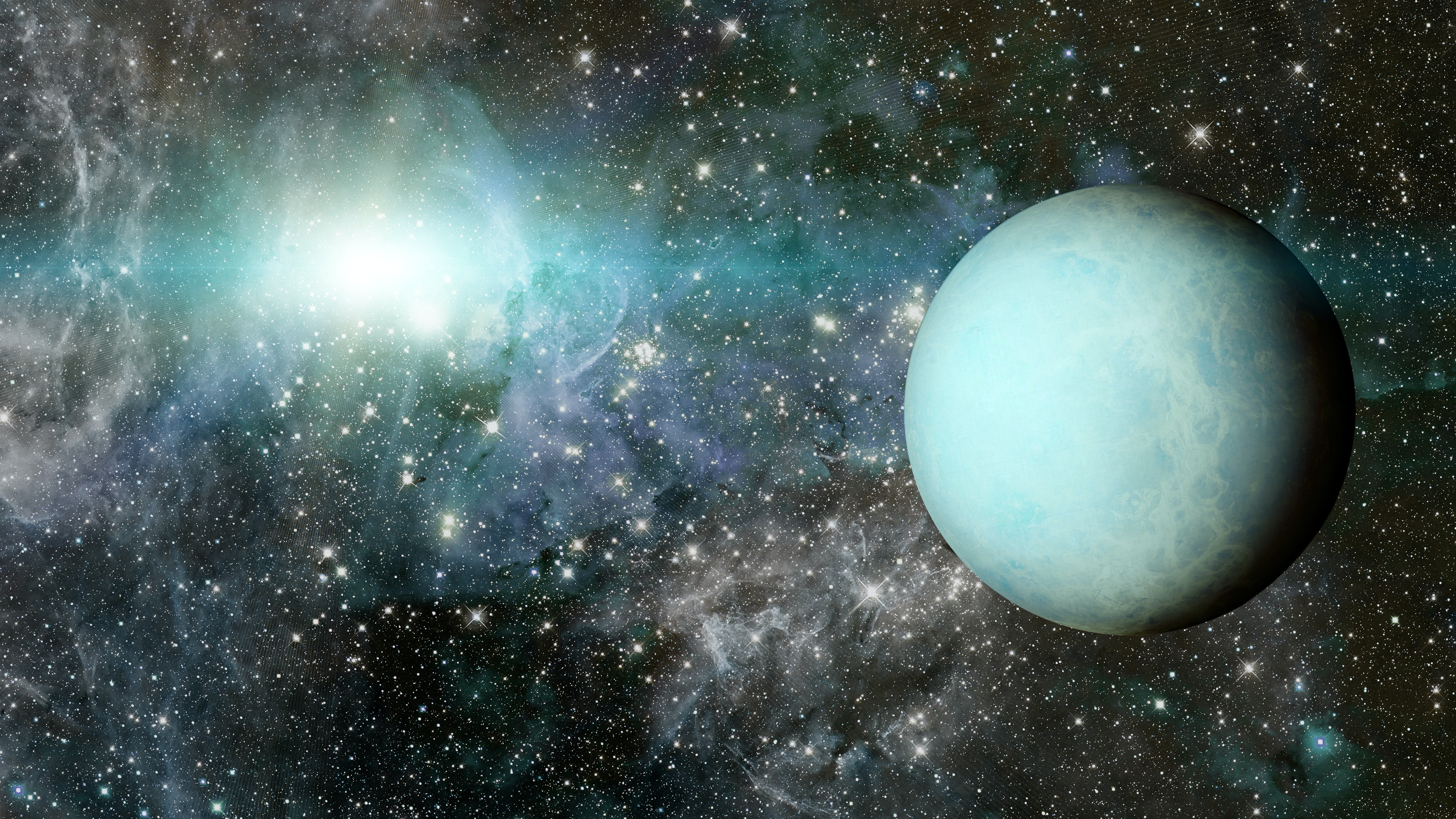Curious Kids: What is the coldest planet in the solar system?

The heat inside planets is left over from when they were formed.

This article was originally published at The Conversation. The publication contributed the article to Space.com's Expert Voices: Op-Ed & Insights.
Brad Gibson, Director of the E.A. Milne Centre for Astrophysics and Head of the Department of Physics and Mathematics, University of Hull
What is the coldest planet in the Solar System? — Sejal, aged seven, Bangalore, India
The planets in our solar system are heated by the sun. Here on Earth, we are about 100 million miles away from the sun — a distance that provides the perfect temperature for life.
You might think, then, that the coldest planet in the solar system would be Neptune, as it is the furthest away from the sun's warmth. Neptune is an incredible three billion miles away from the sun.
However, the coldest planet is not Neptune, but Uranus — even though Uranus is a billion miles closer to the sun than Neptune. Uranus holds the record for the coldest temperature ever measured in the solar system: a very chilly minus 371 degrees Fahrenheit (minus 224 degrees Celsius), according to NASA . The temperature on Neptune is still very cold, of course — usually around minus 353 degrees F (minus 214 degrees C) — but Uranus beats that.
Related: 25 weird and wild solar system facts
Breaking space news, the latest updates on rocket launches, skywatching events and more!

Knocked sideways
The reason why Uranus is so cold is nothing to do with its distance from the sun. Billions of years ago, something big crashed into Uranus with so much force that it tipped the planet over onto its side. Uranus still rolls around the sun on its side today. The impact of the crash also let some of the heat that was trapped inside Uranus escape.

The heat inside planets is left over from when they were formed. Planets are made when smaller chunks of rock smash together, building the full planet piece by piece over many millions of years. Every time these rocks smash together, the planet gains a little more heat. If you clap your hands together for a long time they will start to feel hot — the same thing happens with planets.
Neptune wasn’t hit by a huge asteroid like Uranus was, so it has been able to hold on to more of its heat.
You might also be surprised to learn that the closest planet to the sun, Mercury, can also be extremely cold. While the side of Mercury facing the sun is more than 750 degrees F (400 degrees C), the side facing away from the sun is nearly minus 328 degrees F (minus 200 degrees C).
The reason for this is that Mercury does not have any atmosphere, unlike Earth. An atmosphere like ours acts like a blanket, holding heat in and spreading it all around. Because it does not have this blanket, the front side and the back side of Mercury can have very different temperatures.
Measuring temperatures in space
For some nearby planets like Mars, we can send probes to study the atmosphere directly from the planet's surface. However, we haven't been able to do this for distant planets such as Neptune and Uranus.
Instead, we have to work out how cold they are by measuring their temperature from here on Earth. We do this by studying the light from the planet, which can tell us the types of atoms and molecules which make up the planet's atmosphere. This information lets us know exactly what the temperature of the planet is: the atoms and molecules act as a kind of temperature "fingerprint" for the planet.
While these planets in our solar system are incredibly cold, there are even chillier places in the universe. The coldest of all is the Boomerang Nebula, a cloud of dust and gas 30 million billion miles away from us. There, the temperature reaches minus 457 degrees F (minus 272 degrees C).
Nothing in the universe can be colder than minus 459 degrees F (minus 273 degrees C), because at that temperature the tiny particles and atoms that everything is made of basically stop moving, and once that happens it's impossible to go colder. This temperature is known as absolute zero. This means it is unlikely that we will ever find anywhere in the Universe colder than the Boomerang Nebula.
When sending in questions to Curious Kids, make sure you include the asker’s first name, age and town or city. You can:
- email curiouskids@theconversation.com
- tweet us @ConversationUK with #curiouskids
- DM us on Instagram @theconversationdotcom
This article is republished from The Conversation under a Creative Commons license. Read the original article.
Follow all of the Expert Voices issues and debates — and become part of the discussion — on Facebook and Twitter. The views expressed are those of the author and do not necessarily reflect the views of the publisher.
